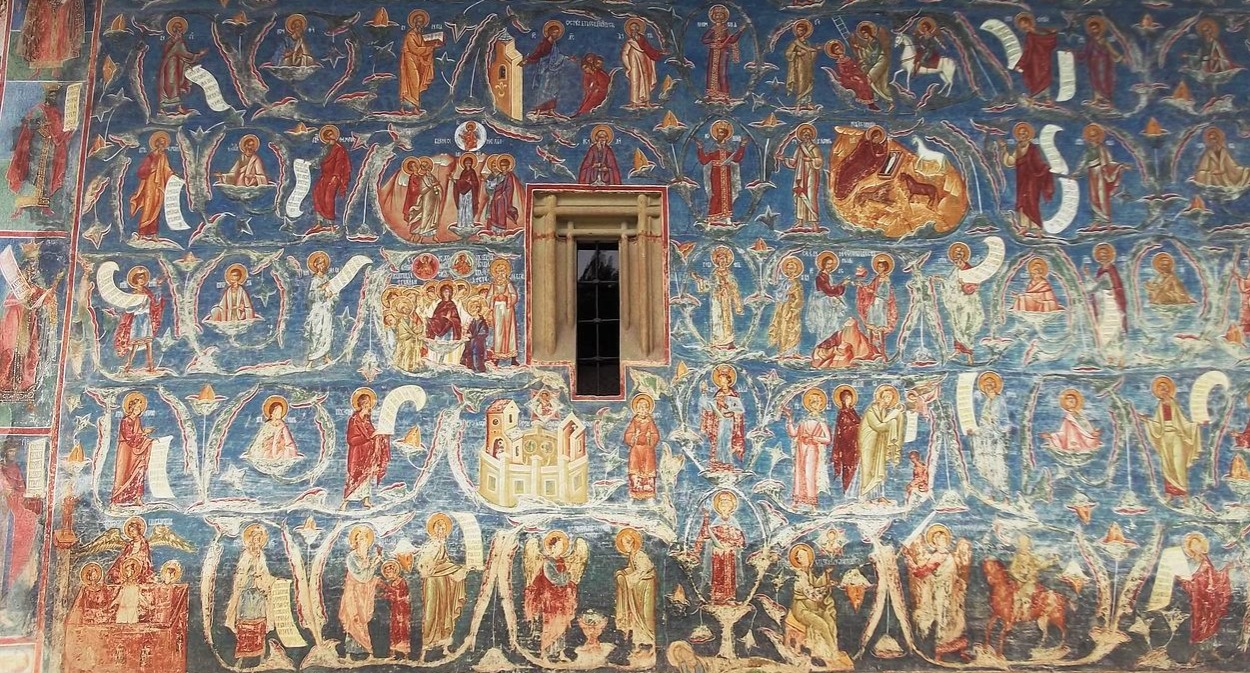THE GENEALOGIES OF JESUS
THE PICTURE above, from the wall of Voronet Monastery in Romania, shows a visual representation of the genealogies of Jesus. There is a window in the middle. A window into these genealogies of Jesus would be something really useful.
The issue is that the gospels of Matthew and Luke offer us two different genealogies of Jesus. Matthew traces his line of descent through David’s son Solomon. But Luke traces his line through David’s son Nathan. Not only that, but the genealogies diverge, then converge again in Zerubbabel. Then they diverge again and finally converge again in Joseph of Nazareth. Normally that can’t happen?
Is there an explanation? Some eminent theologians—like Raymond Brown or David Flusser—have an easy answer. They say it’s not possible. They say either one or both of the genealogies is simply invented to show Jesus’s descent from David. But in saying this, they cast doubt on whether Jesus was ever a descendant of David at all, with a viable claim to David’s throne. And such statements diverge seriously from the claims of Matthew and Luke.
Me, I think both gospel genealogies of Jesus are historically accurate. If that is so, Jesus was indeed the foremost claimant of David’s throne in his own generation, and everybody—including the Pharisees and Zadokites—knew that. But to make such a case one has to answer six difficult questions.
These questions are:
- Why does Matthew omit names from his list?
- Was Shealtiel’s father Jeconiah or Neri?
- Was Zerubbabel the son of Shealtiel, as in Matthew and Luke, or of Pedaiah, as in 1 Chronicles 3:19?
- Why do Matthew and Luke give Zerubbabel’s sons as Abiud and Rhesa, yet 1 Chronicles 3 lists them as Meshullam, Hananiah, Hashubah, Ohel, Berechiah, Hasadiah, and Jushab-hesed.
- Was Joseph’s father Jacob or Heli?
- Does Luke’s genealogy represent the descent of Mariam?
I’m glad to say that I provide perfectly cogent answers to every one of these questions. But I have to confess that I had a window, in the form of a little-known but uniquely-insightful medieval Jewish manuscript.
Once we have plumbed the depths of these genealogies, it becomes clear that, despite their puzzles, they are both historically accurate. Not only that, they are both necessary so that Jesus might not be the genetic offspring of the cursed generation of Jeconiah and Jehoiakim.
If you want a window into Jesus’s genealogies, you’ll find it in Chapter 5 of Jesus: The Incarnation of the Word.
